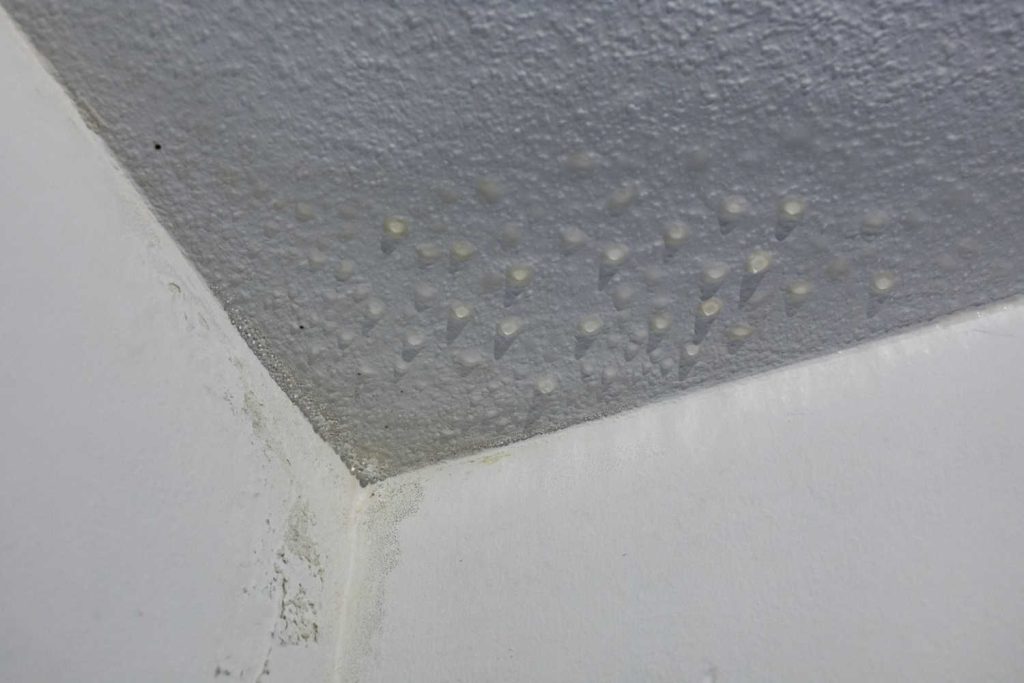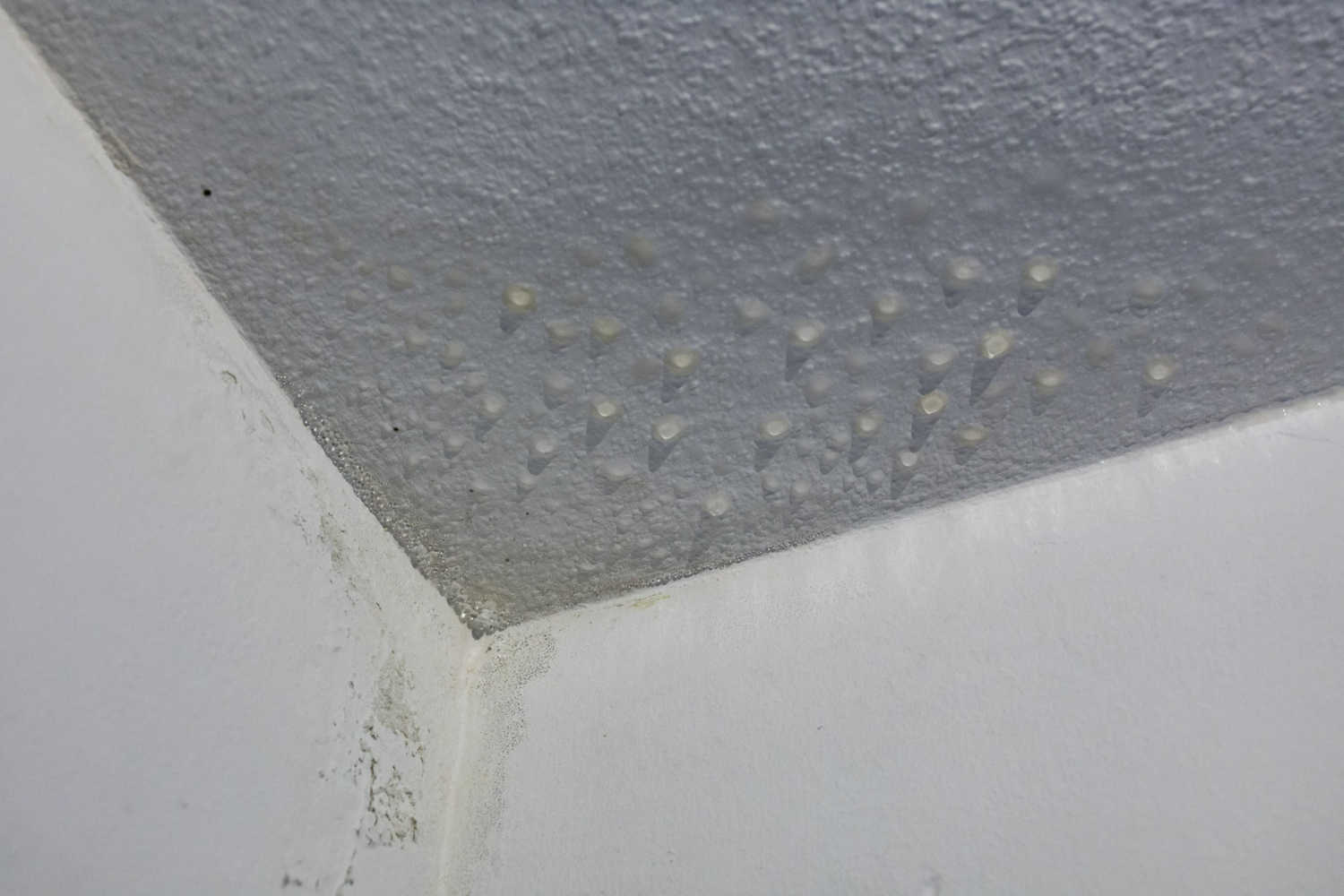Discovering signs of moisture on your ceiling? Explore the intricacies of “Moisture on Ceiling,” learn about potential causes, and acquire practical insights to address and prevent this concern for a healthier living space.

Navigating the Challenge: Moisture on Ceiling
Witnessing moisture on your ceiling can be perplexing and requires immediate attention. In this comprehensive guide, we will delve into the nuances of “Moisture on Ceiling,” unraveling the reasons behind its occurrence, and providing actionable steps to mitigate and prevent this issue.
Read too: Understanding and Addressing Termite Ceiling Damage: Unveiling the Hidden Threat
Causes and Consequences
1. Leaky Roof:
- Roof leaks are a common culprit for ceiling moisture.
- Inspect and repair damaged or missing shingles, flashing, or compromised roofing materials promptly.
2. Poor Ventilation:
- Inadequate ventilation can lead to trapped moisture in the ceiling space.
- Enhance ventilation systems and ensure proper airflow to minimize moisture accumulation.
3. Condensation Issues:
- Excessive condensation can contribute to moisture on ceilings.
- Identify and address factors such as temperature differentials and humidity levels.
Spotting and Assessing Moisture on Ceiling
1. Visible Signs:
- Observe for water stains, discoloration, or sagging on the ceiling.
- Early detection of visible signs allows for prompt intervention.
2. Soft Spots:
- Gently press on areas of the ceiling to identify soft or damp spots.
- Soft spots indicate moisture infiltration and potential damage.
3. Mold and Mildew Growth:
- Moist conditions foster mold and mildew growth.
- Address and remediate mold promptly to prevent health risks.
Managing Moisture on Ceiling
1. Identifying and Repairing Leaks:
- Thoroughly inspect the roof for leaks and address any issues.
- Promptly repair damaged roofing materials to prevent further moisture ingress.
2. Improving Ventilation:
- Upgrade ventilation systems to enhance airflow.
- Consider the installation of exhaust fans in areas prone to moisture accumulation.
3. Using Dehumidifiers:
- Employ dehumidifiers in areas with high humidity levels.
- These devices help extract excess moisture from the air, minimizing the risk of ceiling moisture.
Preventive Measures for a Dry Home
1. Regular Roof Inspections:
- Schedule regular inspections by roofing professionals.
- Identify and address potential issues before they lead to moisture problems.
2. Proactive Maintenance:
- Conduct routine maintenance on ventilation systems.
- Clean and clear gutters regularly to ensure proper drainage.
3. Monitoring Indoor Humidity:
- Use humidity meters to monitor indoor humidity levels.
- Aim for optimal humidity levels to prevent condensation and moisture issues.
Professional Consultation and Advice
1. Roofing Experts:
- Consult with roofing experts for comprehensive assessments.
- Professionals can provide insights into potential roofing issues contributing to moisture.
2. Mold Remediation Specialists:
- If mold is present, seek assistance from mold remediation specialists.
- Professional remediation ensures thorough removal and prevention.
Conclusion: A Drier, Healthier Home
In conclusion, addressing “Moisture on Ceiling” requires a proactive and multi-faceted approach. By understanding the causes, conducting regular inspections, and implementing preventive measures, homeowners can create a drier, healthier living environment. Whether through roof repairs, enhanced ventilation, or the use of dehumidifiers, mitigating moisture-related concerns is essential for preserving the integrity of your home.
Remember, early intervention is key to preventing extensive damage and safeguarding the well-being of your living space. Embrace a vigilant approach to moisture management, and enjoy the benefits of a dry, comfortable home.
